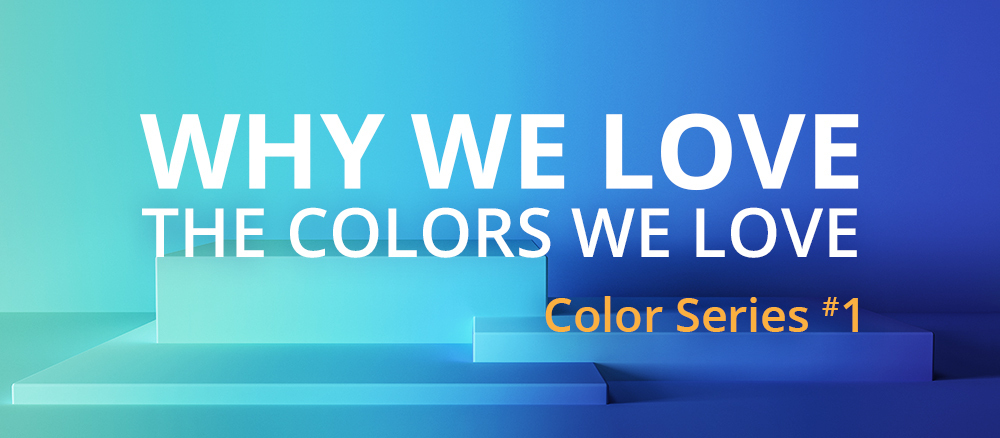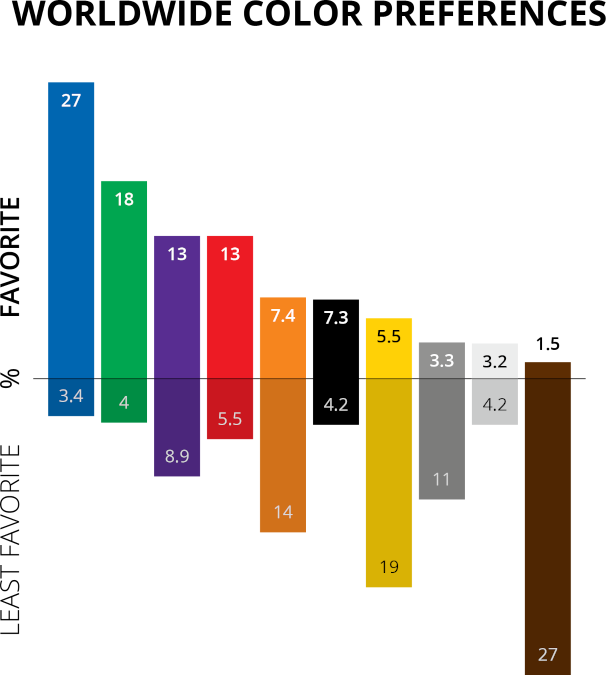
Close your eyes and imagine your favorite color. I like a soft, sage green with a hint of cerulean. Our ability to imagine color even when our eyes are closed demonstrates that color is not something out there in the world but a visual perception. Vision is a primary source for life experiences, and color has a powerful influence on our everyday choices, especially in what we buy.
- Color is the first thing we notice: 80% of what we assimilate through the senses is visual
- People make a subconscious judgment within 90 seconds: Up to 90% of that assessment is based on color alone
- Color increases recognition by up to 80%: Color holds the attention longer and helps us to process and store images more efficiently and, as a result, we remember them better
Our preference for color most likely comes from a combination of nature and nurture. Through evolutionary biology, we developed instinctive reactions to universal colors that signify safety versus danger. For example, we favor the blues of clear sky and clean water over the browns of rotting food. Through lifelong experiences, we have deeply ingrained emotional responses to certain colors and their associations that are influenced by culture, age, and gender. Surveys from people worldwide have found the following color preferences:

A positive feedback loop reinforces our individual preference for a particular color association. Everyone has a different life experience. As people experience pleasure in something they bought in one specific color, they will tend to choose similar objects in the future with the same color. We select certain brands because we have learned to associate them with a color and a meaning due to our environment and society.
It is no surprise that companies leverage our natural color association and subsequent reaction to make their brand stand out. The chart below shows the colors used among the world’s top 100 brands:

Ultimately, we decide what colors we like because of what we associate them with and the meaning that accompanies them. In the word of Terry Marks who wrote the Color Harmony Compendium, color is both simple and complex. It means different things to different people in different cultures, and it is not seen the same way by any two people. Color is personal and universal, sending messages full of endless variations.1
1 Marks, Terry, et al. Color Harmony Compendium. Beverly, Massachusetts. Rockport Publishers; 2009. Print.





